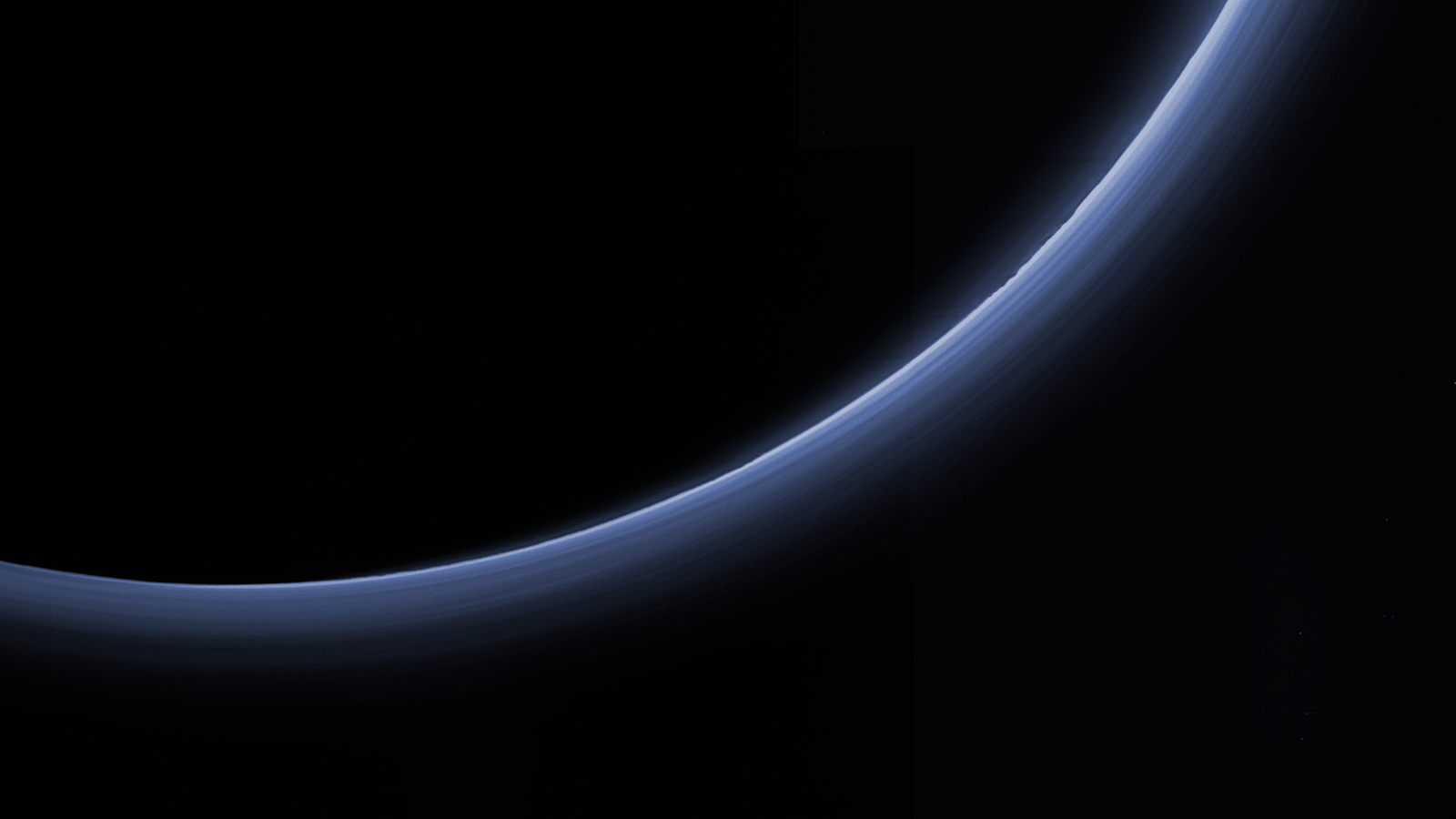Pluto and Titan are surprisingly hazy, but scientists are fuzzy on exactly why

NASA's New Horizons mission turned Pluto from a fuzzy blob into a detailed, geophysically complex world. But it's still a little fuzzy, as it turns out.
That's because when scientists looked through the flyby data, they realized the dwarf planet had a feature they didn't expect: haze. Now, with New Horizons long past the icy world, they are left trying to piece together what the visit taught us.
"It's surprising that Pluto has this fabulous haze layer," Bonnie Buratti, a planetary scientist at NASA's Jet Propulsion Laboratory in California, said on Jan. 8 during a presentation at the 235th meeting of the American Astronomical Society held in Honolulu. And from there, the mysteries continued. "We talk about Pluto being a new Mars, but it looks like it might be the new Titan as well," Buratti said.
Related: Pluto flyby: The most amazing photos from New Horizons
Titan is Saturn's largest moon, and perhaps its weirdest as well. That's because, much like Earth, Titan sports features like dunes, lakes and seas — just made of very different substances than their terrestrial equivalents. And scientists think that on this strange world, organic molecules fall out of the thick atmosphere to the surface to form those dunes.
Now that they've identified haze at Pluto, Buratti said, scientists are trying to establish whether a similar phenomenon is taking place on the surface of that world as well. "The basic thing we're trying to do is make the connection between the haze and the surface," she said.
The first step is to try to figure out what that haze is made of. To do so, Buratti and a colleague compared data from Pluto, Titan and Neptune's icy moon Triton. That world has never been thoroughly studied by a nearby spacecraft, but astronomers have successfully observed it from the ground.
Breaking space news, the latest updates on rocket launches, skywatching events and more!
The scientists were able to model the three worlds to better understand their hazes, and concluded that on all three worlds, the haze consists of small, icy particles. But on Triton, that's water ice. On Pluto, a reddish tinge to the light signature scientists studied points to organic particles in that haze. "It's a factory for creating organic molecules," Buratti said of the dwarf world. "Triton is icy, but Pluto is more like Titan."
That comparison is intriguing on its own. But for Buratti, the even more compelling possibility presented by this research stretches far beyond Pluto, she said. In fact, she wonders whether the haze might spread out beyond the edge of our solar system — and beyond the current reach of our detectors.
"Since this happens on at least two objects in the solar system, maybe similar hazes might be common on exoplanets and even exomoons."
- Destination Pluto: NASA's New Horizons Mission in Pictures
- Pluto's Heart: A Cosmic Valentine in Photos
- New Pluto Photos Contain Multitude of Mysteries
Email Meghan Bartels at mbartels@space.com or follow her @meghanbartels. Follow us on Twitter @Spacedotcom and on Facebook.


Meghan is a senior writer at Space.com and has more than five years' experience as a science journalist based in New York City. She joined Space.com in July 2018, with previous writing published in outlets including Newsweek and Audubon. Meghan earned an MA in science journalism from New York University and a BA in classics from Georgetown University, and in her free time she enjoys reading and visiting museums. Follow her on Twitter at @meghanbartels.
